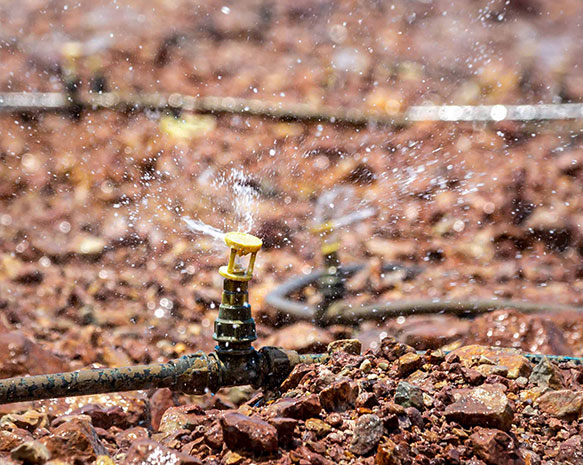During the operation of TSFs, we set detailed operation plans on the quarterly and annual basis. We will focus on the indicator monitoring of tailings, damming and discharge, flood loading control, seepage control and seismic design, and conduct safety evaluation and review. Meanwhile, we will conduct monitoring and inspection to identify, control and reduce safety risks and potential hazards.
The safety monitoring system in every TSFs combines manual and online monitoring. The system regularly monitors the length of embankment, phreatic line and dam displacement.
Our operation inspection focuses on:
● Safety inspection of TSFs: including contour, size, deformation, displacement, cracks, landslides, phreatic line, infiltration, etc.
● Safety inspection of drainage structures: including deformation, displacement, break, clogging, and drainage capability.
● Safety inspection of surrounding areas: including the stability of surrounding mountains and dangerous behaviors such as illegal construction, operation, tailings reuse, water withdrawal, waste discharge, grazing and reclamation.
● Safety inspection of flood design: Conduct flood calculation before flood season every year and set flood control plans. Ensure that TSF indicators accord with the requirements. Carry out an emergency drill before flood season. Conduct regular quality inspection of drainage structure.
● Safety inspection of Seepage design: Monitor infiltration, seepage, swampiness of TSFs. Observe and record the phreatic line during the operation of TSFs. Take measures and add seepage facilities when the phreatic line exceeds the threshold.
● Safety inspection of seismic design: Conduct daily safety inspection and reinforce TSFs according to the highest TSF seismic design standards. Set emergency preparedness plans. Before earthquake, pay attention to the stability of embankment and prevent landslide. After the earthquake, emergency plans should be launched to comprehensively inspect the dam, drainage structure and flood control design. The damaged facilities should be repaired in time.




